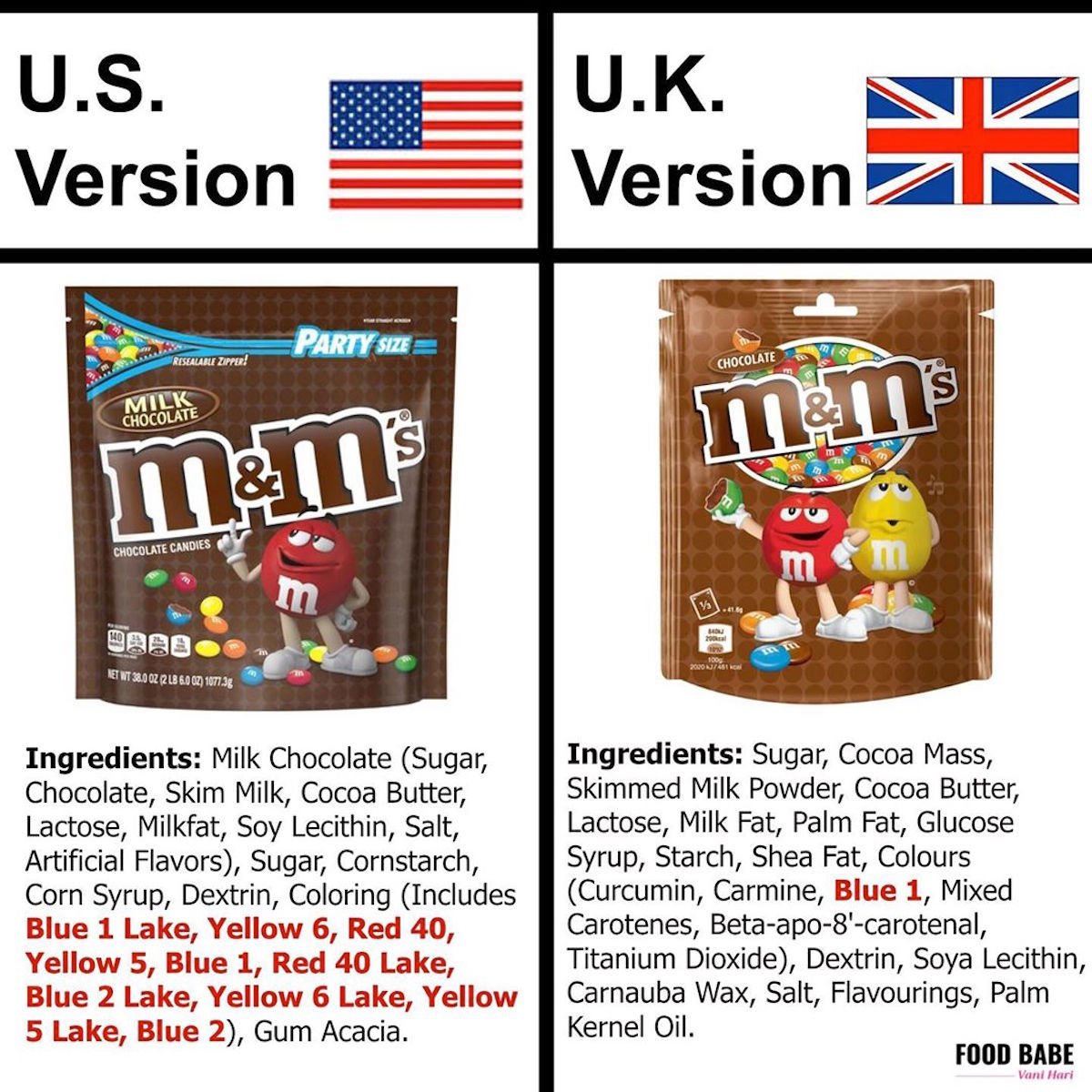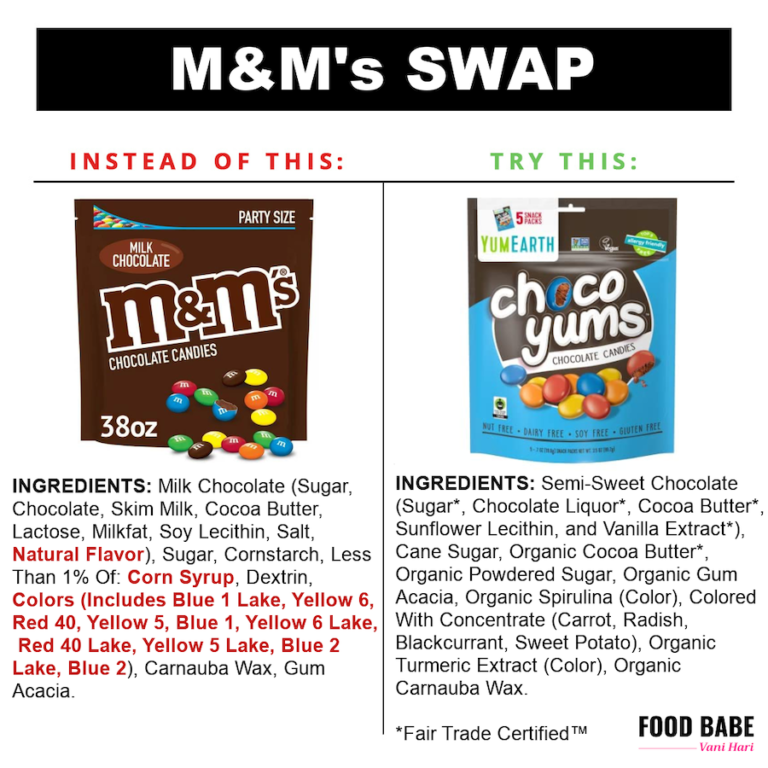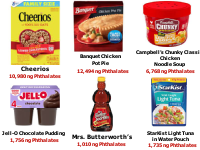Nothing disgusts me more than food companies sabotaging us with ingredients they don’t use in other countries. Especially in products that children often eat.
One of the most outrageous examples of this are M&M’s.
That’s because not only do they use safer ingredients in M&M’s in other countries, but they lied to us…
I filmed a video to explain:
View this post on Instagram
Mars Candy (the maker of M&M’s) told the media they were going to remove artificial colors from their candy in 2016,
But THEY NEVER DID. (1)

This was 7 Years Ago!
And even worse…
They sell safer M&M’s in other countries WITHOUT all these artificial colors:
M&M’s in U.S. contain 10 artificial colors.
M&M’s in U.K. contain ONE.

Why don’t they sell the same M&M’s everywhere?
The food regulations in Europe and U.K. are stronger. Europe takes a “precautionary principle” approach towards food additives that are potentially risky. They ban or add warning labels to these additives for their citizens.
This is why artificial dyes Yellow 5, Yellow 6, and Red 40 require a WARNING LABEL in Europe and the U.K. that says:
WARNING: May have an adverse effect on activity and attention in children.
The U.S. government doesn’t use the precautionary principle. They won’t remove additives from our food supply until they have been proven dangerous – which can take a very long time and a lot of red tape. This means Americans are literally the lab rats.
It’s been shown time and again that if a company can get away with using cheaper ingredients, they will. And artificial colors are CHEAP compared to natural alternatives.
Why do M&M’s in the U.K. still contain the artificial color Blue 1?
Simply put, Blue 1 doesn’t require a warning label. So they can get away with still using Blue 1 in the U.K. without slapping a warning label on M&M’s.
M&M’s only keeps out the artificial colors that require a warning label.
Shady….right?!?!?
Blue 1 doesn’t require a warning label because it wasn’t cited in the Southampton Study which found that when children eat certain artificial colors it can lead to hyperactivity. This study prompted the EU to adopt the warning label. (2)
That doesn’t make Blue 1 and more safe to eat!
There is ample research that all artificial colors are a risk to eat. They can disrupt the immune system, are contaminated with carcinogens, can have a negative impact on children’s ability to learn, and have been linked to long-term health problems such as asthma, skin rashes, and migraines. (3)
Millions of American kids eat M&Ms. They are practically synonymous with Halloween, Christmas, and Easter.
Mars said they would remove the dyes. Shouldn’t they keep their promise?
The quickest way to influence change, is to stop buying M&M’s until they drop the artificial dyes.
Instead of M&M’s you can buy YumEarth Choco Yums or Unreal Gems, which both don’t have artificial colors.
 Please share this post and tell all your friends the truth about M&M’s.
Please share this post and tell all your friends the truth about M&M’s.
Xo,
Vani
P.S. Want more tips for avoiding artificial colors? I delve into this in my new book, Food Babe Family, which includes more than 100 recipes and foolproof strategies to help your kids fall in love with real food.








In my opinion, it would be even better to use stevia instead of sugar. I fail to understand why most companies make the switch. Is it because they think that stevia is too expensive? Sugar is just too problematic for many people, such as diabetics and those who have candida issues.
I meant, why most companies WILL NOT match the switch. Greed. That’s the reason!
Stevia is not good for you. You should research this more. Using stevia can reduce calories in foods and drinks, but it may also have some adverse effects. Possible side effects include nausea, bloating, low blood pressure, and hormone disruption.
Agreed….stevia is pushed into too many foods. Just lower the amount of sugar used! Stevia does have it’s issues ~ aside from an allergy, the hormone disruption makes it a no for me.
The United States has a policy of First, Do Harm. Then, Cover Up.
Good luck getting dumb Americans to care. Maybe if they get a gay spokesperson, then people might boycott.
M&Ms = $0.42 per ounce
Choco Yums = $2.85 per ounce
Unreal Gems = $2.00 per ounce
The cost is why dumb Americans don’t care. You shouldn’t eat enough of the M&Ms to cause a risk to your health. There are carcinogens all around us everywhere. My wife and her siblings grew up in the U.K.. They all have ADHD and my wife has Lymphoma.
My friends said US FDA warned about removing that stupid artificial food coloring in many candies in US and minimal of additives will push it Soon in US they will add more warning labels on food for aware of problematic behaviors and health problems